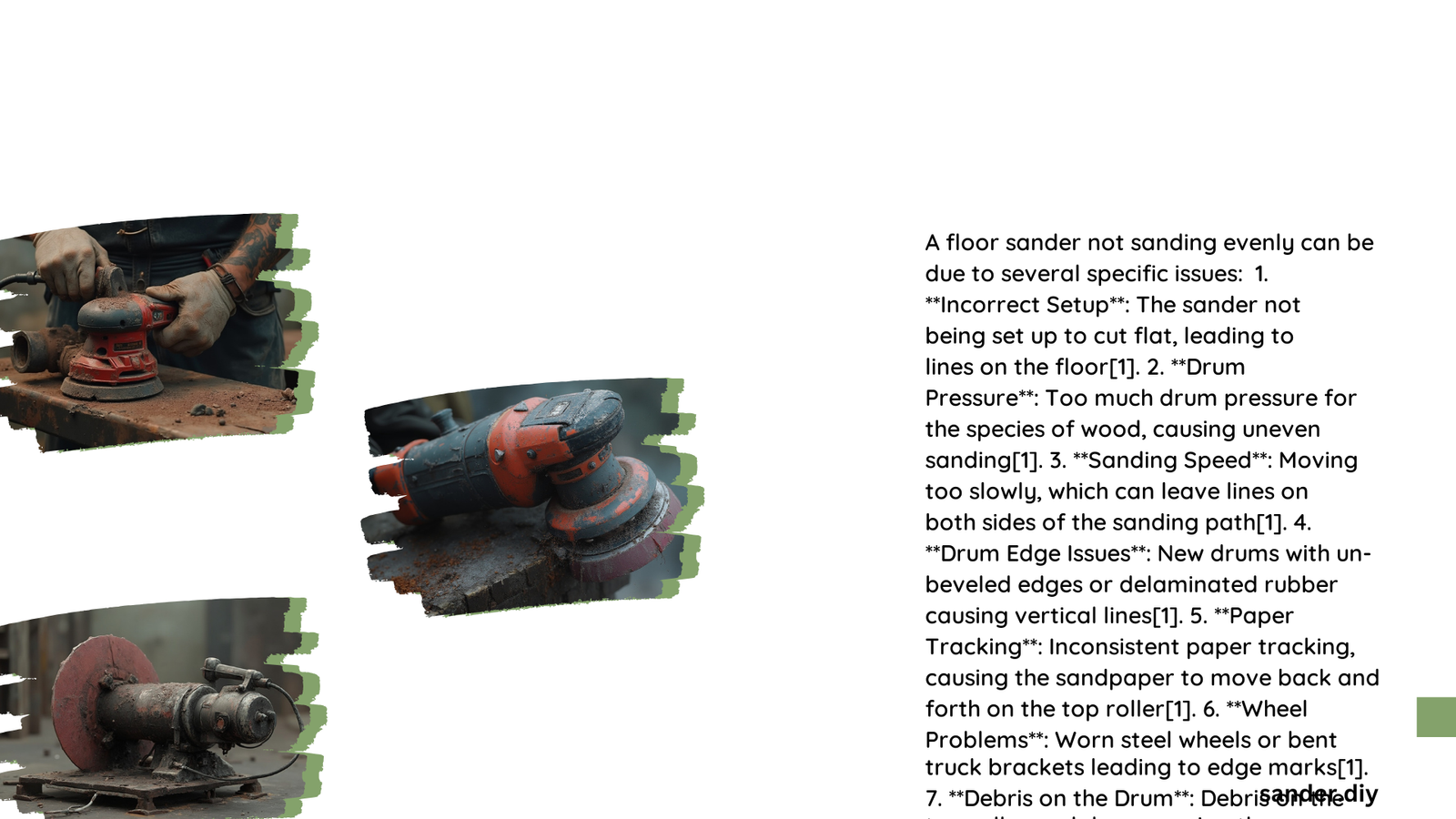Uneven floor sanding can transform a promising wood restoration project into a frustrating nightmare. Homeowners and DIY enthusiasts often encounter challenges like visible ridges, inconsistent surfaces, and unsightly marks when using floor sanders. Understanding the root causes and implementing precise techniques can help you achieve a smooth, professional-grade finish that transforms your wooden floors from rough to refined.
What Causes Uneven Floor Sanding?
Why Do Mechanical Issues Affect Sander Performance?
Mechanical problems are primary culprits behind uneven floor sanding. Consider these critical factors:
| Mechanical Issue | Potential Impact | Solution |
|---|---|---|
| Wheel Misalignment | Creates tilted sanding surface | Check and adjust sander wheels |
| Distorted Sanding Pad | Produces inconsistent wood removal | Replace with hard, flat sanding pad |
| Belt Wear | Reduces sanding efficiency | Regularly replace sanding belts |
Detailed Mechanical Breakdown
- Wheel Alignment
- Inspect sander wheels for:
- Uneven wear
- Debris accumulation
- Potential damage
-
Ensure all wheels maintain consistent contact with floor surface
-
Sanding Pad Condition
- Examine pad for:
- Softness
- Flatness
- Overall structural integrity
How Can Operator Technique Impact Sanding Results?
Operator errors significantly contribute to uneven floor sanding. Key considerations include:
- Pressure Application
- Avoid excessive downward force
- Let sander’s weight do primary work
-
Maintain consistent, gentle pressure
-
Grain Direction
- Always sand parallel to wood grain
- Diagonal initial passes for uneven surfaces
- Progressively move to grain-aligned sanding
What Environmental Factors Influence Sanding Quality?
Environmental conditions play a crucial role in achieving uniform floor sanding:
- Surface Preparation
- Remove old varnish completely
- Clean floor thoroughly before sanding
-
Address surface irregularities
-
Grit Progression
- Start with coarse grit (16-24)
- Gradually move to finer grits
- Use sequential progression: 60 → 80 → 100 → 120
What Tools Enhance Sanding Precision?
Recommended equipment for professional-grade results:
- Floor drum sander
- Random orbital sander
- Hard sanding block
- High-quality abrasive belts
- Industrial vacuum cleaner
How to Diagnose Specific Sanding Problems?
Visual Indicators of Uneven Sanding:
– Swirl marks
– Visible ridges
– Inconsistent surface texture
– Patches of different wood tone
Pro Tips for Flawless Floor Sanding

- Preparation is Key
- Inspect floor thoroughly
- Repair major surface defects
-
Remove all furniture and obstacles
-
Equipment Maintenance
- Regularly clean sander
- Replace worn components
-
Use high-quality abrasives
-
Technique Refinement
- Practice consistent motion
- Overlap sanding passes slightly
- Maintain steady walking pace
Final Recommendations
- Invest in quality equipment
- Prioritize technique over speed
- Be patient during refinishing process
Warning: Improper sanding can permanently damage wooden floors. When in doubt, consult professional floor refinishing experts.
